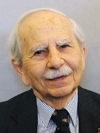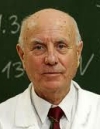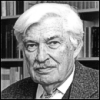December 31, 2014
Flipping Spins
Serenade
Double-Quantum
Rhapsody
| Magnetic Resonance on OEIS
During the last two years, I have registered a number of sequences and constants in OEIS (the Online Encyclopedia of Integer Sequences established by N.J.A. Sloane). Some of these regard [coupled] spin systems and thus Magnetic Resonance. I have also commented a few pre-existent sequences whose relevance to spin systems has not been explicitly pointed out. Here is a review of the current status of 'magnetic resonance' on the world-renowned collection:
--- The sequences
A212697,
A212698,
A212699,
A212700,
A212701,
A212702,
A212703, and
A212704
list the number of main transitions in generic (symmetry-less) systems of N coupled nuclei with spin 1, 3/2, 2, 5/2, 3, 7/2, 4, 9/2, respectively. The important case of spin 1/2 is covered by the pre-existent sequence A001787 which, as one can guess from the abundant Comments section of that entry, pops-up in many branches of discrete math.
You can display the graphs of these sequences (given how fast they grow, look at the log-scale scatterplot). And you can even sound them! As an example, I have downloaded the music which an OEIS utility created from the counts of main transitions for N spin-1 nuclei (A212697). Just execute the MID file pointed to by the first link on the left!
--- Then there is a group of ten sequences, each of them listing, as a flattened triangle, the number of q-quantum transitions in systems of N >= q spin-1/2 particles. Each triangular table has N as its row index, while transition combination indices are used to label the column: A213343 (q=1), A213344 (q=2), A213345 (q=3), A213346 (q=4), A213347 (q=5), A213348 (q=6), A213349 (q=7), A213350 (q=8), A213351 (q=9), A213352 (q=10). Again, the case q=0 (zero-quantum transitions) was already covered by a pre-existent sequence A051288. The plots of these sequences look more interesting than those of the previous group. The one shown below, for example, corresponds to A213344, giving the counts of double-quantum transitions:

Each lobe of this scatter plot corresponds to one value of N (number of spins) and comprizes different combination indices (0 to N, 0 corresponding to main transitions). The second link on the left points to the MID file of the same sequence.
Before the above contributions, 'magnetic resonance' was mentioned on OEIS in only one entry, namely A003676, registered by N.J.A.Sloane himself. It lists the value of Planck's constant as determined by MR (which is not really a math constant at all).
--- Another series of sequences I have registered, this time mentioning only 'spin', is that for the recurrence a(N) = a(N-2) + N^m for various values of m, which happens to equal the trace of the operator |Sz|^m multiplied by 2^(m-1), with Sz being the z-component of the spin vector for the spin value S = N/2. The sequences are A231303 through A231309, for m = 4 through 10, respectively. Sequences corresponding to m=1 (nonnegative integers A001477), m=2 (A000292) and m=3 (A105636) were already pre-existent, stemming from other math contexts.
--- Apart from the newly registered sequences, I have also added MR-related or spin-related comments to a number of pre-existent ones. Apart from the already mentioned cases, these included:
A005563: Four times the trace of S^2, S being the spin vector operator.
A108958: Number of zero quantum transitions in a system with n spin-1/2 nuclei.
A195696: The value of the magic angle.
Currently, searching OEIS for 'spin' returns 196 hits. Of these, a few have nothing to do with magnetic resonance, quite a few are mine, and the rest regards mathematical models for collective solid-state spin phenomena (ferromagnetism and anti-ferromagnetism). There is, in fact, a series of entries, mostly registered by N.J.A. Sloane and Simon Plouffe, pertinent to spontaneous magnetization coefficients, heat coefficients, magnetic susceptibility, and free energy for Ising models with various 2D and 3D lattices and various spin values.
I like the idea of Magnetic Resonance penetrating the strongholds of numerical mathematics such as OEIS, and I hope that my contributions will stimulate others to contribute more MR-related entries (I can easily envisage many tens of them). Needless to say, most entries in the OEIS are complete with formulas, references and/or links, cross-references, and software scripts or snippets. OEIS Editors point out somewhere that an entry has the weight of a scientific paper, but that is evidently exaggerated (were it true, it would mean that I have published some 300 papers in just 2 years; haha). For the references, I have used primarily the books by M.H. Levitt (Spin Dynamics) and J.A. Pople, W.G. Schneider, H.J. Bernstein (High-Resolution Nuclear Magnetic Resonance). Not that they give explicitly all the formulas I have used, but they provide the knowledge for understanding them. Knowledge that I historically trace already to Weston Anderson in the 50's, scattered through various papers. As for programs, since these combinatoric formulas lead very fast to very huge numbers, I am using the PARI/GP library/interpreter. Unlike Mathematica, PARI/GP is free and can do number crunching with virtually any number of digits.
I guess that not everybody knows what terms like main transition, transition combination index and trace of a spin operator mean. That is OK because, sincerely, not everybody using MR needs to know. If all goes well, however, I will get back to these things in some form during the forthcoming year and provide detailed explanations. As always, it only looks complicated while, actually, it is quite simple.
|
December 25, 2014
| Lists of NMR and ESR/EPR monographs are back in shape
The popular lists of NMR books and ESR books are now updated and once again very close to the goal of covering every dedicated NMR or ESR monograph ever published.
Should you find out that a book (maybe yours) is missing, please let me know. I should better keep the lists in good shape, because in queries like "nmr books" or "esr books", Google keeps returning the proper page among the top three hits. Presently, I am trying to complete the entries with links to Amazon Kindle, when available. This may take a bit more time (again, let me know if you see a missing link). Also, let me know about NMR and/or ESR (and also MRI) books not sold at all on Amazon. I want to list everything, the Amazon links are not a must. It is true that when you buy something on Amazon entering from my website, it generates a small commission for me, but that is by no means a pre-requisite for being listed.
Of course, it is very hard to ferret out every book that dedicates to NMR or ESR just an isolated inside Chapter. Some of such titles (those where the pertinent Chapters are sizable) are listed in the section Related works present in each of the lists (there is also an internal link to it). Those, however, are certainly incomplete.
It looks like there were at least 18 NMR monographs published in 2014, against 16 in 2013 and 12 in 2012. For ESR the numbers are: 6 in 2014, 9 in 2013, and 7 in 2012. However, there were several plain reprints of books first published years, even decades, earlier (Springer, in particular, likes doing it). Plus, in some cases, the attribution of the year is misleading, since there are often delays of 1-3 years between the announcement of a book and the moment it actually reaches the shops (undisciplined Authors, I guess). Let us say that the pondered publishing rate during the last three years stayed more or less constant at about 16 new titles/year for NMR and 8 new titles/year for ESR (in total, two books a month). In the preceding three-year period, those numbers were more like 14 and 5, respectively. No big increase, but nevertheless an increase! Notice also that the ratio ESR/NMR is increasing. Contrary to many peoples perceptions, ESR spectroscopy appears to be catching up on NMR.
The list of MRI books is yet to be updated; so far I have just filled the most gaping holes.
|
November 30, 2014
| Directory of MR-related Companies: a major UPDATE
I have finally revamped my online Directory of MR companies which should soon again list all Companies, worldwide, which have any direct relationship to magnetic resonance of one kind or another (including NMR Spectroscopy/Relaxometry, MRI, ESR, NQR, ...). Despite months of [deplorable] neglect, the Directory alone still fetches some 100 visits a day on most working days, so I guess that it is useful to the MR community.
The revamping has revealed a quite busy scene - there were quite a few recent defections, both in NMR and in MRI, and not just the Agilent NMR flop of October 14 which really shook the community. There are also new ventures, while some existing Companies drifted into areas different from where they started. If you study the list a bit and visit the links, I am sure that you will find it interesting. An implication of all this activity is that there could be right now a few Companies missing from the list - or that some of the 1-2 line descriptions no longer properly match the respective Company’s products/services. In all such cases, I am eager to make all the necessary additions and/or edits. Just let me know. Don’t hesitate because, as always, the listings are free. In addition, unlike in the past, my website is now completely non-commercial and banner-free; I define myself as fiercely independent. On the other hand, I am the one and only Editor of any text there, so do not try in vain to push me into posting longish promotional texts. Like any other Editor of a manually maintained Directory, I would slash them down to the standard 1-2 lines based on what I see on your website (of course, should I commit an actual error, that would be another story).
On LinkedIn MR forums, there appeared recently two calls for specialized Directories:
(a) one for Table-Top MR Instruments manufacturers and
(b) one for Companies offering maintenance of ex Varian/Agilent spectrometers.
I am planning to cover these needs in one way or another. For table-top MR instruments probably the best way is a trade-mark oriented online table with links. I have started working on it and my count reached very fast about 26 table-top entries (some Companies have several). The final number of models might be as high as 30, addressing various applications. For the Varian/Agilent service Companies, the availability should be flagged in the Directory itself. Those wishing to broadcast the availability of such a service are welcome to let me know.
|
March 28, 2012

Paul Callaghan
1947 - 2012

Anatole Abragam
1914 - 2011

Robert Blinc
1933 - 2011

Rudolf Mössbauer
1929 - 2011

Robert Pound
1919 - 2010
| Heritage of the great ones
Restarting blog activity after a period of silence with an obituary is not pleasant. But for those left, life continues and these reminders of our mortality should be turned to good purpose by prompting each of us to finish our own open 'business' while we are still able to do so (those of my age will know what I mean). I have put the obituary also on LinkedIn (in the NMR Group) and many people expressed their feelings there. Thanks.
It reminds me that last year I have not reacted to the departure (June 8, 2011) of Anatole Abragam, a Russian emigree to Paris and a member of the French Academy of Sciences. I did not know him personally but, like all the physics-minded folks, I have used heavily his amazing book The Principles of Nuclear Magnetism (3rd Edition, Clarendon 1983) which was for decades nicknamed the NMR and ESR bible. Amazing because when it was first published in 1961, it was so up-to-date and so competent and insightfully crafted that it remained pertinent and fresh for decades, notwithstanding the rapid advances of the field. For how much I have used the book, Anatol certainly merited a word of recognition from me, so I am doing it belatedly now.
Likewise, I should have honored in some way the departure (September 26, 2011) of Robert Blinc, head of the Condensed Matter Physics Department at the Jozef Stefan Institute in Ljubljana, a member of the Slovenian Academy of Sciences and Arts, ex-president of the AMPERE Groupement, and above all one of the most enthusiastic and talented pioneers of NMR and EPR in the ex East Block, always ready to establish and maintain world-wide cooperation, despite the Iron Curtain and other political adversities.
Which makes effectively three obituaries, so allow me to complete a quadruplet by mentioning the recent departure (September 14, 2011) of Rudolf Mössbauer, the inventor (in 1957) of the X-ray nuclear spectroscopy technique that bears his name. You might say that Mössbauer spectroscopy and NMR have little in common, so why do I mention it. Well, for one thing, Robert Pound, one of the discoverers of NMR, has used in 1959-1960 the just-discovered Mössbauer effect to verify general relativity in an earthly laboratory (see more). Plus, and this fits the present context, Anatole Abragam wrote also an early "bible" about Mössbauer spectroscopy (L'effet Mossbauer et ses applications). There is actually a subtle but deep link between magnetic resonance and Mössbauer spectroscopy. Both techniques use electromagnetic waves, though at opposite sides of the electromagnetic spectrum (radio waves versus X-rays). And both reach record values of what we might call the "spectroscopic quality factor", namely the ratio f/Δ between a spectral line's centroid frequency f, and its half-height linewidth. It reaches the highest known values of up to 10^15 in Mössbauer spectroscopy, followed by up to 10^11 in NMR. This makes the two techniques absolutely exceptional and popping up together in many conceptual dicussions in physics.
Below is a [hopefully complete] list of books by Paul Callaghan and Anatole Abragam.
If you consult it, some of the entries might surprise you.
- Callaghan Paul T.,
Translational Dynamics and Magnetic Resonance:
Principles of Pulsed Gradient Spin Echo NMR,
Oxford University Press 2011. ISBN 978-0199556984.
more >>
- Callaghan Paul T.,
Wool to Weta: Transforming New Zealand's Culture and Economy,
Auckland University Press 2009. ISBN 978-1869404383.
more >>
- Callaghan Paul T.,
Principles of Nuclear Magnetic Resonance Microscopy,
Oxford University Press 1994. ISBN 978-0198539971.
more >>
1st Edition 1991.
- Abragam Anatole,
Time Reversal: An Autobiography,
Oxford University Press 1989. ISBN 978-0198539261.
more >>
French: De la physique avant toute chose,
Odile Jacob, Paris 1987. ISBN 978-2738100160.
more >>
- Abragam Anatole, Freeman Ray (translator),
Reflections of a Physicist,
Oxford University Press 1986. ISBN 978-0198519645.
more >>
French: Réflexions d'un physicien,
Herman, Paris 1983. ISBN 978-2705659608.
more >>
- Abragam Anatole,
The Principles of Nuclear Magnetism,
3rd Edition, Clarendon Press 1983. ISBN 978-0198520146.
more >>
1st Edition 1961.
- Abragam Anatole, Goldman Maurice,
Nuclear Magnetism: Order and Disorder,
Oxford University Press 1982. ISBN 978-0198512943.
more >>
- Abragam A., Bleaney B.,
Electron Paramagnetic Resonance of Transition Ions,
Dover 1986. ISBN 978-0486651064.
more >>
1st Edition Clarendon Press 1970.
- Abragam Anatole,
L'effet Mössbauer et ses applications,
Gordon and Breach 1964.
more >>
- See also:
Goldman M., Porneuf M.,
NMR and More: in Honor of Anatole Abragam,
EDP Sciences 1994. ISBN 978-2868832191.
more >>
COMMENTS:
Andrew Coy of Magritek pointed out that last August Paul Callaghan delivered a nice Banquet Speech in the Great Hall of the People in Beijing, China, on the occasion the 11th International Conference on Magnetic Resonance Microscopy. The text and the video of the Talk are available on the ICMRM website. Paul concludes in Maori, wishing everyone "Kia kaha, ake, ake, ake", meaning "May you have strength forever"!
|
March 25, 2012

| Sir Paul T.Callaghan left us
I just got word through ISMAR, of which he used to be a President and an enthusiastic promoter, that Sir Paul Callaghan, the New Zealander with a mighty World impact, has died prematurely on March 24. This certainly leaves a huge gap in the NMR community.
I noticed Paul's name initially when writing an Italian undergraduate text on MRI physics back in 1983; I went through about 1000 MRI papers (today those would be all classified as early) and his were always coming up on top - definitely the ones to read many times over, both because of the clarity of exposition and because of forward-looking insights. Only later I had the opportunity to get to know him personally and appreciate his eclectic knowledge of NMR, his almost boyish enthusiasm, his amazing educational capabilities, and - to sum it up - his profound impact on many areas of Magnetic Resonance and beyond.
Among MR applications, name imaging and microscopy, name porous media, name rheology, name nD techniques combining spectroscopy, relaxation and diffusion in any possible way, name polarization enhancement techniques, or - indeed - name anything in NMR you might think about, including even things like in-situ relaxometry of Antarctic ice, and his name will magically come up. Some of his innovative nD techniques combining time- and frequency-domain data are still in the budding stage and will take some more time and effort to reach maturity and the honors of routine usage. It will be up to all of us to clear and pave the trails he had charted.
Working from the MacDiarmid Institute for Advanced Materials and Nanotechnology of Victoria University in Wellington, he certainly contributed to the world standing of New Zealand and was honored for that by being named The New Zealander of 2011. For his specific NMR contributions, he received the 2010 ENC Günther Laukien Prize.
He was Sired, too, but I think that he unwittingly created his own lasting monument by his now famous ten NMR videos. To me, no amount of titles could describe him better than his arms mimicking Larmor precession, and I am now really glad I wrote an entry about the videos on my blog, introducing the term "Callaghan Interaction" to describe the phenomenon. We have exchanged several e-mails about the videos and he promised to make four more, but that can't be done now.
Pity he spinned away so early.
|
|
Archive
| For a complete list of all entries since 2005, see the running INDEX
|
|
Visitor #

ADVERTISE with us
NMR | MRI | ESR | NQR
Companies
Societies
Centres & Groups
Journals & Blogs
References
Free Texts
History
Links
BOOKS Lists
MATH | SOFTWARE
PHYSICS | CHEMISTRY
ELECTRONICS | DSP
Patents & IP | WWW
SPECTROSCOPY
INSTRUMENTATION
MRI | NMR | ESR
ARTICLES
Scalar relaxation
Biography of F.C.Yu
Hebel-Slichter effect
MR Antenna Theorem
NMR Dead Time
One-Page MR Primer
K-space and MRI
S/N Perspectives
OTHER
SI Units
Dimensions
Physics Constants
Math Constants
Science Links

Support this site!
SHOP from here:
COMPUTERS:
Deals
Bestsellers
Accessories
Calculators
This page is
SPONSORED by:


Random offers:
|